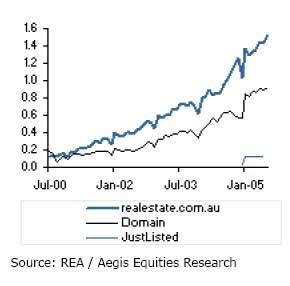
Electronic Conveyancing in NSW - Newsletter No. 8
Please find following the eighth of Lands' regular newsletters on electronic conveyancing in NSW (ECNSW), intended to keep you informed of developments towards electronic conveyancing in NSW. The newsletter provides an updated path to a National Electronic Conveyancing System as outlined in three draft documents recently updated and re-published. These include the National Business Model, National Governance Arrangements and National Implementation Strategy.
Newsletter No. 8
Electronic Conveyancing in NSW
Updated Roadmap Documents Now Available
The path to a National Electronic Conveyancing System is described in three documents recently updated and re-published.
The National Business Model (NBM) describes the roles, relationships and rules of all of the key participants and contributors to electronic settlement of property transactions and lodgment of dealings and related information with the appropriate Land Registry or other government agency.
The NBM provides the business context in which the National Electronic Conveyancing System (NECS) will be used by practitioners, banks and mortgage processors. In particular, the NBM describes:
• the roles of users and subscribers, and the part each will play in preparing and certifying dealings
• the role of licensed service providers in integrating use of the NECS with other services used in the conveyancing process
• how heavy users will be able to integrate access to the NECS into their existing systems for increased convenience
• the functions the NECS will provide to facilitate settlement and lodgment, including payment of duties and disbursements
• the security arrangements that will ensure users can have confidence in using the NECS
• the way in which each jurisdiction’s Land Registry and Revenue Office requirements will be satisfied
• the arrangements that will provide electronic financial settlement at the Reserve Bank
• the ways in which users will be supported in their use of the NECS.
The National Governance Arrangements (NGA) describes the organisational and administrative arrangements that will supervise development and implementation of the NECS and the National Business Model generally. It describes:
• the role of a National Steering Committee in supervising the development and implementation work
• the inclusion of government and industry representatives on the Steering Committee
• the participation of government representatives from all States and Territories on the Steering Committee
• the creation of National Consultation Forums to get detailed input from industry and government participants
• the establishment of a National Office to support the Steering Committee and Consultation Forums.
The National Implementation Strategy (NIS) describes the way in which the NECS will be created and set to work. It describes the following four stages:
• Setting-Up, in which the National Governance Arrangements and the National Business Model will be confirmed
• Building, where the NECS will be provisioned from the best available resources, thoroughly tested and commissioned
• Readying, where each jurisdiction will prepare for its participation in the NECS while the NECS is being built
• Converting, where each jurisdiction will keep its local constituencies informed on progress and convert users from paper to electronic conveyancing when the NECS becomes available in its jurisdiction.
The NIS describes what is intended in each of these stages and emphasises:
• the role of the National Office in directing the Setting-Up and Building stages
• the role of each State and Territory in ensuring the complementary delivery of the Readying and Converting stages.
The latest versions of these Roadmap documents have been published on http://
www.lands.nsw.gov.au/ecnsw/publicationsand all industry participants are invited to review them and provide comments and feedback.
Your Questions Answered
You can have your questions on electronic conveyancing in NSW answered now by completing the feedback form at http://
www.lands.nsw.gov.au/ECNSW. Let us know what you think, what issues concern you and what things we should pay particular attention to in taking the initiative forward.
Public Consultation Document (May 2004) available at http://www.lands.nsw.gov.au/ECNSW
PCD Feedback Report (March 2005) available at http://
www.lands.nsw.gov.au/ECNSWInformation Session Presentation (April 2005) available at http://www.lands.nsw.gov.au/ECNSW
National Business Model, Governance Arrangements & Implementation Strategy at http://www.lands.nsw.gov.au/ECNSW
Glossary of Conveyancing Terms and Newsletter Archive available at http://www.lands.nsw.gov.au/ECNSW
The information contained in this newsletter is correct at the time of publication but may change as the project develops.
Published by the NSW Department of Lands, GPO Box 15 Sydney NSW 2001 Australia
Libby Abraham
Client Service Manager - Commercial
Land and Property Information
Department of Lands
Tel 02 8258 7462
Fax 02 9236 7611
Web : www.lands.nsw.gov.au




















